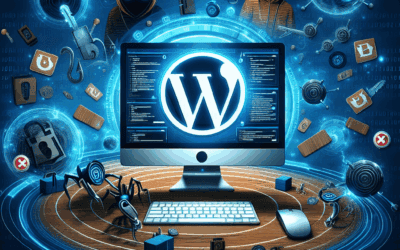Introduction
WordPress is one of the most popular content management systems in the world, powering millions of websites across the globe. However, like any software, WordPress requires maintenance to ensure optimal performance and security. In this comprehensive guide, we will cover everything you need to know about WordPress maintenance, including best practices, essential tasks, and useful tools.
Why WordPress Maintenance is Important
Regular maintenance is crucial for keeping your WordPress website running smoothly and securely. Neglecting maintenance can lead to slow loading times, security vulnerabilities, and even data loss. By staying on top of maintenance tasks, you can ensure that your website remains secure, performs well, and continues to attract visitors.
Essential WordPress Maintenance Tasks
1. Regularly Update WordPress Core, Themes, and Plugins
One of the most important maintenance tasks is keeping your WordPress core, themes, and plugins up to date. Updates often include security patches, bug fixes, and new features, so it is essential to install them promptly to protect your website from vulnerabilities.
2. Backup Your Website Regularly
Backing up your website is crucial to protect your data in case of a server crash, hacking attack, or human error. There are many backup plugins available for WordPress that can automate the process and store your backups securely offsite.
3. Monitor Website Performance
Monitoring your website’s performance can help you identify and address issues such as slow loading times, broken links, and server errors. Tools like Google PageSpeed Insights and GTmetrix can provide valuable insights into your website’s performance and suggest ways to optimize it.
4. Scan for Malware and Security Vulnerabilities
Regular malware scans are essential to protect your website from malicious attacks and security threats. Security plugins like Sucuri and Wordfence can help you scan for malware, vulnerabilities, and suspicious activity on your website.
5. Clean Up Your Database
Over time, your WordPress database can become cluttered with unused data, which can slow down your website. Regularly cleaning up your database by removing spam comments, revisions, and unused plugins can help improve your website’s performance.
6. Optimize Your Images
Large images can slow down your website’s loading times, so it is important to optimize your images for the web. Tools like WP Smush and Imagify can help you compress and resize your images without sacrificing quality.
Useful Tools for WordPress Maintenance
1. ManageWP
ManageWP is a popular WordPress management tool that allows you to update your plugins, themes, and core files from a single dashboard. It also offers backup, security, and performance monitoring features to help you keep your website in top shape.
2. UpdraftPlus
UpdraftPlus is a backup plugin that allows you to schedule backups, store them offsite, and easily restore your website in case of a disaster. It is a reliable and user-friendly solution for ensuring that your website’s data is safe and secure.
3. Sucuri
Sucuri is a robust security plugin that can help you protect your website from malware, hacking attempts, and other security threats. It offers real-time monitoring, malware scanning, and a firewall to keep your website secure.
Conclusion
WordPress maintenance is essential for ensuring that your website remains secure, performs well, and continues to attract visitors. By following the best practices outlined in this guide and using the tools recommended, you can keep your WordPress website in top shape and avoid common issues such as security vulnerabilities and slow loading times. Remember, regular maintenance is key to a successful WordPress website.
Looking for Custom WordPress Web Design? Check out our WordPress Web Design service.
View our WordPress Web Hosting Service
Free WordPress Web Hosting Strategy Call




0 Comments